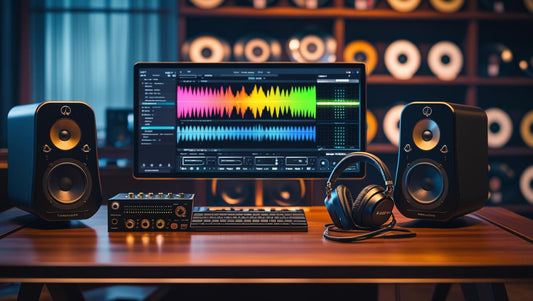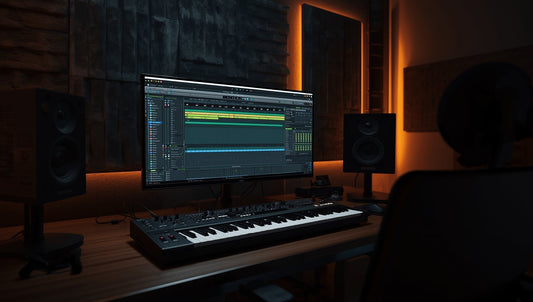When Were Drums Invented? A Deep Dive Into the History of Percussion

When Were Drums Invented? A Deep Dive Into the History of Percussion
Drums have been part of human culture since ancient times. They echo the primal rhythm of life and have evolved alongside civilization. But when were drums invented? To answer that, we must explore the early use of hollowed logs and stretched animal skins, tools that became instruments for ritual, communication, and war. This journey takes us across continents, from Africa to China, uncovering the social and spiritual power of percussion. https://www.ebsco.com/research-starters/religion-and-philosophy/drum
Earliest Known Drums
The search for the first drums leads us to some of the oldest artifacts ever found. Percussion instruments are among the earliest musical tools, showing up in archaeological digs around the world.
Ancient Archaeological Discoveries
Archaeological discoveries In China, archaeologists uncovered drums made from alligator skins in Neolithic sites, dating back to around 6000 BCE. In Mesopotamia, cylindrical drums from 3000 BCE show that percussion was central to early societies. Cave paintings in Peru even depict drums used in ceremonies as far back as 2300 BCE.

Ancient percussion instruments
Animal Skins and Hollowed Logs
Early humans used hollow logs to create deep, booming sounds. When animal skins were stretched over these wooden bodies, the vibration created a range of tones. Different woods and hides produced different sounds, shaping regional drumming styles. This ingenuity gave rise to the vast variety of drums we know today.
Rituals, Communication, and Warfare
As a communication tool, drums were more than just musical tools. In many cultures, they were essential for spiritual rituals, helping people enter trance-like states. Their powerful sound also made them useful for sending messages across long distances. In war, drums
boosted morale and signaled commands, often intimidating enemies with their thunderous rhythm.
Drums in Ancient Civilizations
As human societies developed, so did the sophistication and variety of their percussion instruments. Ancient civilizations across the globe developed unique drumming traditions that reflected their cultural values and needs.
African Talking Drums
In West Africa, the hourglass-shaped talking drum could imitate human speech. Players squeezed the drum to change pitch, allowing it to "talk" using the tones of regional languages. These drums sent messages, recorded history, and played sacred roles in ceremonies.
Egyptian Frame Drums
Ancient Egyptian civilization left us with rich depictions of frame drums in their art and hieroglyphics. These drums, often circular and held in one hand, were predominantly associated with religious and celebratory contexts.
Imagery from tombs and temples shows frame drums being played by priestesses of Hathor, the goddess of music and dance. This connection to the divine underscores the spiritual significance of drumming in Egyptian culture.
Frame drums in Egypt were typically made with wooden frames and animal skin heads. Their portable nature made them ideal for processions and outdoor ceremonies, contributing to their widespread use in both religious and secular settings.
Indian Tabla Roots
While the modern tabla is a relatively recent invention, its roots in Indian percussion traditions stretch back millennia. Ancient Indian texts mention various drums, including the pushkara and mridanga, which are considered precursors to the tabla.
These early drums were integral to religious ceremonies and classical music performances. The complexity of Indian rhythmic theory, with its intricate system of talas (rhythmic cycles), developed alongside these instruments.
The evolution of Indian drums reflects the subcontinent's rich musical heritage, blending influences from various regions and traditions to create instruments of remarkable sophistication and expressive capability.
Evolution in the Middle Ages
The Middle Ages saw significant developments in drum construction and usage, particularly in Europe and the Islamic world. This period laid the groundwork for many of the percussion instruments we know today.
Military Snare Drums in Europe
The snare drum, a staple of modern drum kits, has its origins in medieval European military traditions. These drums, known as tabors, were typically paired with a fife (a small, high pitched flute) to create the "fife and drum" corps.
Military drummers used specific rhythms to signal different commands on the battlefield, such as advance, retreat, or change formation. This codified system of drum signals became an essential part of military communication.
The development of the snare mechanism, which gives the drum its characteristic crisp sound, occurred gradually over this period. By adding gut or metal strings across the bottom head, drum makers created an instrument capable of producing sharp, cutting tones that could be heard clearly amid the chaos of battle.
Standardization of Drum Shapes
The Middle Ages Drum shapes became more uniform during this time. Cylindrical drums became the norm, offering reliable sound for military and court performances. The timpani (kettle drum) was also introduced to Europe from the Ottoman Empire.
Islamic Influences on Drumming
The Islamic Golden Age brought significant advancements in music theory and instrument design, including drums. The spread of Islam across North Africa, the Middle East, and parts of Europe facilitated the exchange of musical ideas and instruments.
One notable contribution was the development of the naqqara, a pair of small kettle drums that became popular in military and ceremonial music. These drums influenced the European timpani and can be seen as precursors to modern orchestral drums.
Islamic musical traditions also emphasized complex rhythmic patterns, contributing to the development of sophisticated drumming techniques that would influence both Eastern and Western music for centuries to come.
Ancient percussion instruments
No comments








0 comments